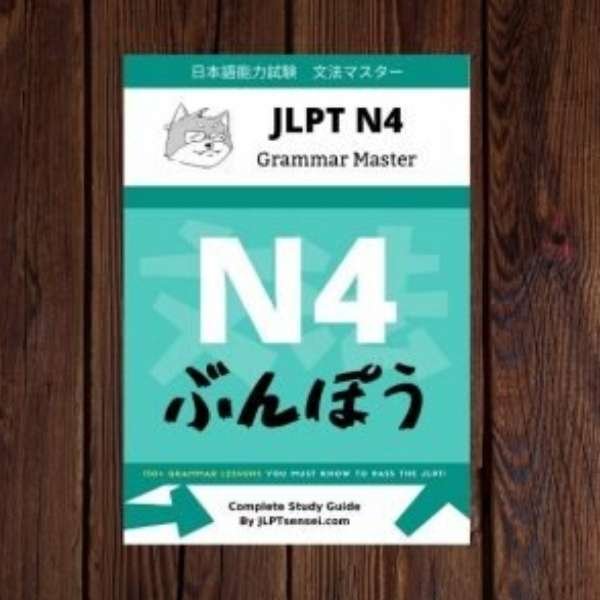
The JLPT N4 syllabus marks the next step after the N5 level, designed for learners who can understand and use basic Japanese in daily situations. This level builds upon the foundation of N5 and introduces more complex grammar structures, kanji, and vocabulary that allow you to express ideas more fluently. While the official JLPT website does not publish a fixed syllabus, learners can refer to general content guidelines and study materials that reflect the skills required for this level.
If you’ve already cleared N5 or have a grasp of everyday Japanese, preparing for JLPT N4 is your natural progression. Institutions like TLS – The Japanese Language School offer comprehensive study programs tailored for this level, helping students achieve confidence and fluency in reading, writing, and conversation.
For a complete beginner-friendly breakdown, you can explore the detailed JLPT N5 Syllabus to understand vocabulary, grammar, and kanji requirements.
The JLPT N4 syllabus primarily tests your ability to understand Japanese used in everyday situations at a slightly higher level than N5. You’ll need to know around 1,500 vocabulary words and 300 kanji, along with various grammar structures that allow you to communicate effectively in casual and polite contexts.
The test consists of three main sections:
The total JLPT N4 exam time duration is approximately 105 minutes, divided among these sections.
Go to Official website -: www.jlpt.jp/e/samples/sampleindex.html
The JLPT N4 syllabus is structured into three major test sections designed to assess your overall Japanese language proficiency at the basic-intermediate level. Each section focuses on a specific skill set — vocabulary, grammar and reading, and listening comprehension. The exam evaluates not only your ability to recall words or kanji but also how effectively you can understand and apply them in real-life situations.
This section tests your understanding of approximately 1,500 vocabulary words, including their readings, spellings, and contextual meanings. You’ll be expected to identify the correct kanji readings, choose appropriate words for specific contexts, and understand nuances between similar expressions.
Topics covered include:
Using structured materials like the JLPT N4 textbook PDF and vocabulary lists helps you grasp common sentence patterns and contextual usage effectively.
This combined section evaluates your grasp of grammar and your ability to comprehend short passages, emails, notices, and conversations about everyday life. The focus is on connecting ideas, expressing intentions, and understanding slightly longer sentences than those in N5.
Common grammar patterns include:
Reading passages test your understanding of main ideas, key details, and inferred meanings. You should practice using the JLPT N4 syllabus PDF and reading comprehension exercises to improve this skill.
If you want a broader overview of all Japanese proficiency levels, refer to the complete JLPT syllabus for N5 to N1.
Listening comprehension in the JLPT N4 syllabus focuses on conversations and announcements in daily settings such as workplaces, schools, or public places. The audio speed is slightly faster than N5, testing your ability to follow dialogues and grasp context.
You’ll hear:
Regular practice using mock tests and JLPT N4 question audios helps build confidence and listening speed.

The JLPT N4 syllabus includes approximately 300 kanji characters. These build upon the 100 learned in N5 and cover commonly used words in daily communication.
Kanji topics include:
Mastering kanji is essential for reading comprehension, as many JLPT questions use mixed scripts of hiragana, katakana, and kanji.
The JLPT N4 vocabulary list contains roughly 1,500 words. These cover topics such as:
To prepare efficiently, use JLPT N4 syllabus PDF downloads, vocabulary flashcards, and apps to review and test your knowledge daily.
To understand the test structure and pattern clearly, check the official guide on the JLPT exam format and sections.
The grammar in the JLPT N4 syllabus deepens your understanding of Japanese sentence structure. You’ll learn to connect clauses, describe actions in sequence, and express opinions or intentions clearly.
Some important grammar forms include:
Practicing with JLPT N4 textbook PDFs or materials like Minna no Nihongo II is highly effective for mastering these forms.
The JLPT N4 exam time duration is divided as follows:
| Section | Content | Duration |
| Language Knowledge (Vocabulary) | Kanji, word usage, orthography | ~25 minutes |
| Language Knowledge (Grammar) & Reading | Sentence structure, reading comprehension | ~55 minutes |
| Listening | Spoken comprehension | ~25 minutes |
The total duration is approximately 105 minutes. You’ll be tested on your overall comprehension ability, so consistent practice is essential.
Students in Delhi can compare top institutes by reading the list of the Top 10 JLPT institutes in Delhi for better training choices.

The JLPT N4 syllabus covers basic-intermediate Japanese language skills needed for daily communication.
Yes, it’s possible — but it depends on your consistency and background knowledge.
The JLPT syllabus (Japanese-Language Proficiency Test) is divided into five levels — N5 to N1.
For short-term stays or basic communication, JLPT N4 is sufficient.
The 80/20 rule means focusing on the 20% of study material that brings 80% of results.
Those planning to enroll can also explore the best Japanese language course in Delhi to find suitable programs and learning paths.
The JLPT N4 exam time duration is approximately 100 to 105 minutes in total:
Some recommended study materials include:
You should know around 300 kanji characters.
Yes, many institutions and websites provide a JLPT N4 syllabus PDF download for free.
After passing N4, the next step is JLPT N3.
For step-by-step help with registration, follow the complete guide on the JLPT registration process for all Indian test centers.
The JLPT N4 syllabus is designed to test your ability to comprehend and use Japanese in practical, everyday scenarios. With around 1,500 vocabulary words, 300 kanji, and essential grammar structures, it bridges the gap between beginner and intermediate proficiency.
Whether you’re preparing through self-study or guided courses at trusted institutions like TLS – The Japanese Language School, consistent practice and exposure to authentic materials are key to achieving success. Download the JLPT N4 syllabus PDF, review question papers, and practice regularly to build confidence for the exam.